How can I tell if my trees have been attacked by beetles?
Pine engraver beetles (also referred to as Ips beetles or Ips engraver beetles) may attack and kill stressed or injured pine trees. When these beetles colonize a tree, they leave a characteristic gallery pattern under the bark and other evidence that reveal their presence. Photographs of typical pine engraver beetle attacks are provided to assist landowners and homeowners in diagnosing the presence of these insects.
Photographic evidence of beetle attacks
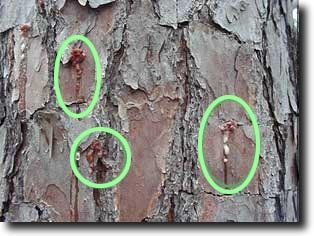
Pitch tubes often form on the bark of a pine tree
where Ips engraver beetles have attacked the tree.
Notice the reddish color of the pitch tubes and that
the attacks tend to be on the bark plates rather
than in the bark crevices. | 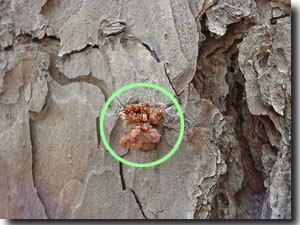
Close-up picture of an Ips pitch tube on the
bark of a pine tree. |
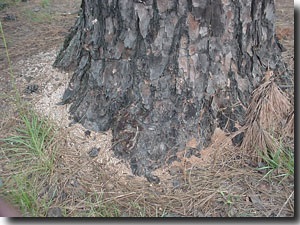
Reddish boring dust that collects in bark crevices
and at the base of a pine tree indicates attack
by pine engraver beetles. This dust is often an
early symptom of attack. In addition, all the
needles in the crown of the tree may still be green. | 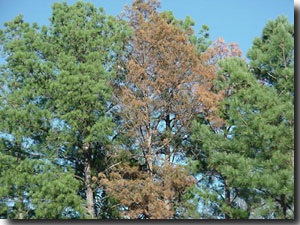
The pine tree with red needles has been attacked
and killed by pine engraver beetles. Notice that
other adjacent pine trees have not been attacked.
Engraver beetles tend to select stressed or weakened
trees to attack which results in scattered tree mortality.
|
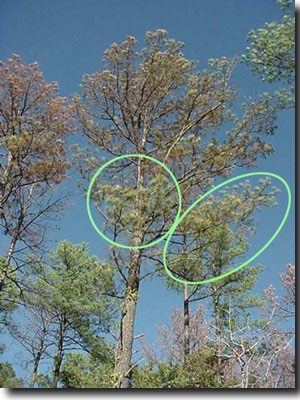
This picture shows several pine trees that have
been attacked and killed by Ips engraver beetles.
Notice that some of the lower branches on the
tree in the center still have green needles.
This tree is dead and will not recover. | 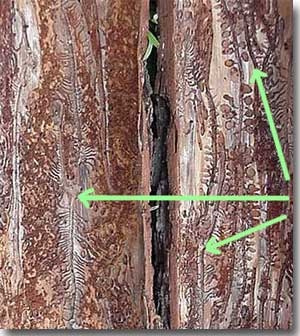
Extensive activity of Ips bark beetles is shown
in the inner bark of a pine tree. Notice the
vertical egg galleries made by adult beetles
(see arrows). Vertical egg galleries made by
adult Ips beetles are found between the bark
and the wood.
|
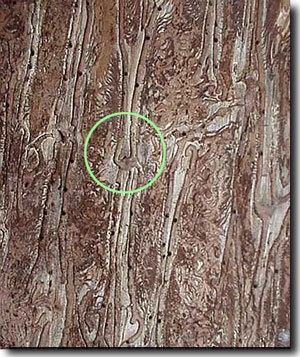
Circles direct your attention to the nuptial chamber
where a male Ips beetle may mate with several females. | 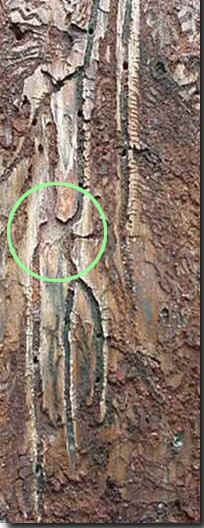
Each female beetle then constructs a
vertical egg gallery from this chamber. |
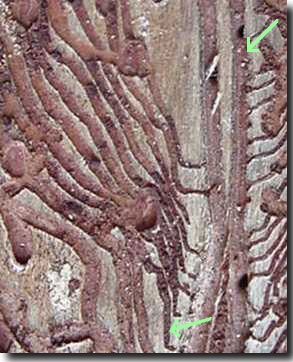
The arrow indicates a vertical egg gallery made
by an adult pine engraver beetle (Ips spp.)
A female beetle lays her eggs along one side
of the gallery. Ips egg galleries are kept free
of sawdust. Galleries made by Ips larvae extend
from the egg gallery. Notice the width of each
larval gallery increases as the larva matures and
feeds away from where the egg hatched. Ips larval
galleries are packed with sawdust. Vertical egg
galleries made by adult Ips beetles are a constant
width because adult beetles never get any larger.
Larval galleries increase in width because the
larvae increase in size as they mature. |
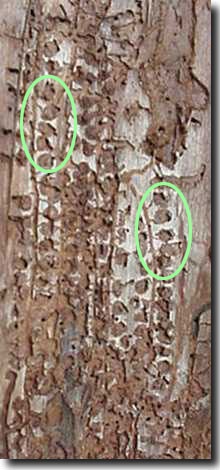
This picture of the inner bark of a pine
tree that was attacked and killed by the
small southern pine engraver (Ips avulsus)
shows the typical I-shaped egg galleries
made by adult beetles. The circular areas
in the bark (indicated by the green ovals)
are where the larvae pupated before emerging as adult beetles.
|
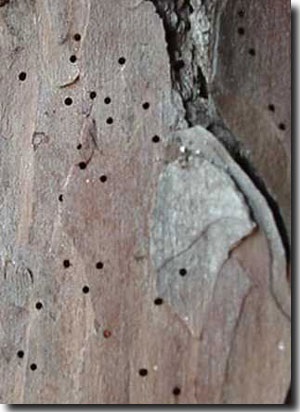
Small, circular exit holes are made in the outer
bark of pine trees as adult Ips beetles emerge to
search for another host tree to attack. The holes
are about the diameter of a pencil lead. | 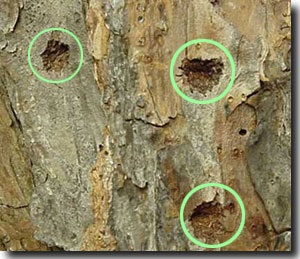
Sawyer beetles chew cone-shaped depressions
in pine bark where female beetles lay their eggs.
Sawyer egg niches are about 1/4 to 3/8 wide.
A common associate of Ips engraver beetles,
sawyer beetles lay their eggs on pine bark about
the time the tree dies.
|
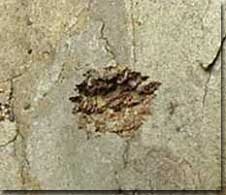
The photo above is a close-up view
of a sawyer egg niche on pine bark | 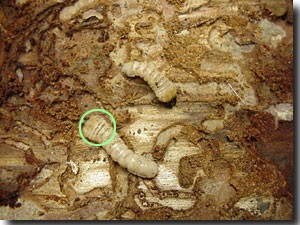
Sawyer larvae feed under the bark of dead pine
trees. Notice the wide thorax (green circle) just
behind the black head. These larvae make a
rhythmic chewing sound that is easily heard on
a still, warm day. People who hear the chewing
sound mistakenly think the noise is made by
engraver beetles. |
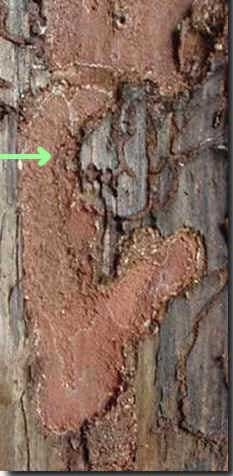
This photograph of the inner bark of a
pine tree shows the gallery pattern created
by the feeding of a sawyer larva. Sawyer
adults are round-headed wood borers.
Sawyer larvae first feed under the bark and
then bore into the wood. | 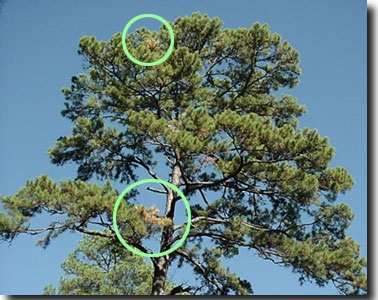
Small dead branches, as depicted in this photograph,
are not an indication of attack by pine engraver beetles.
These small branch flags are common on pine trees in
the fall of the year and cause no apparent harm to the tree.
|